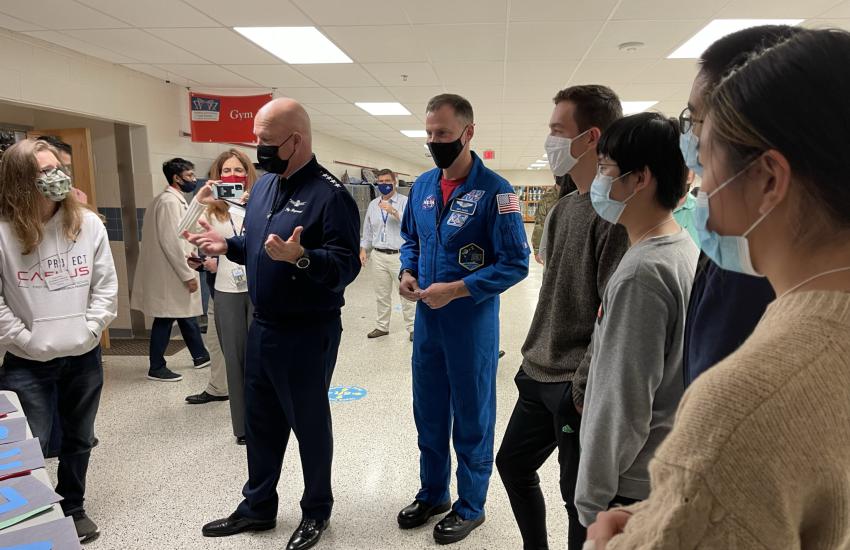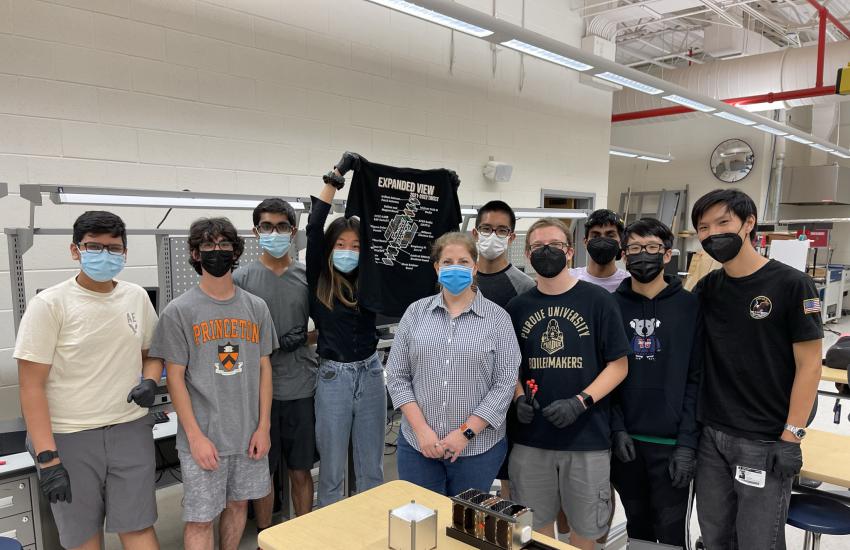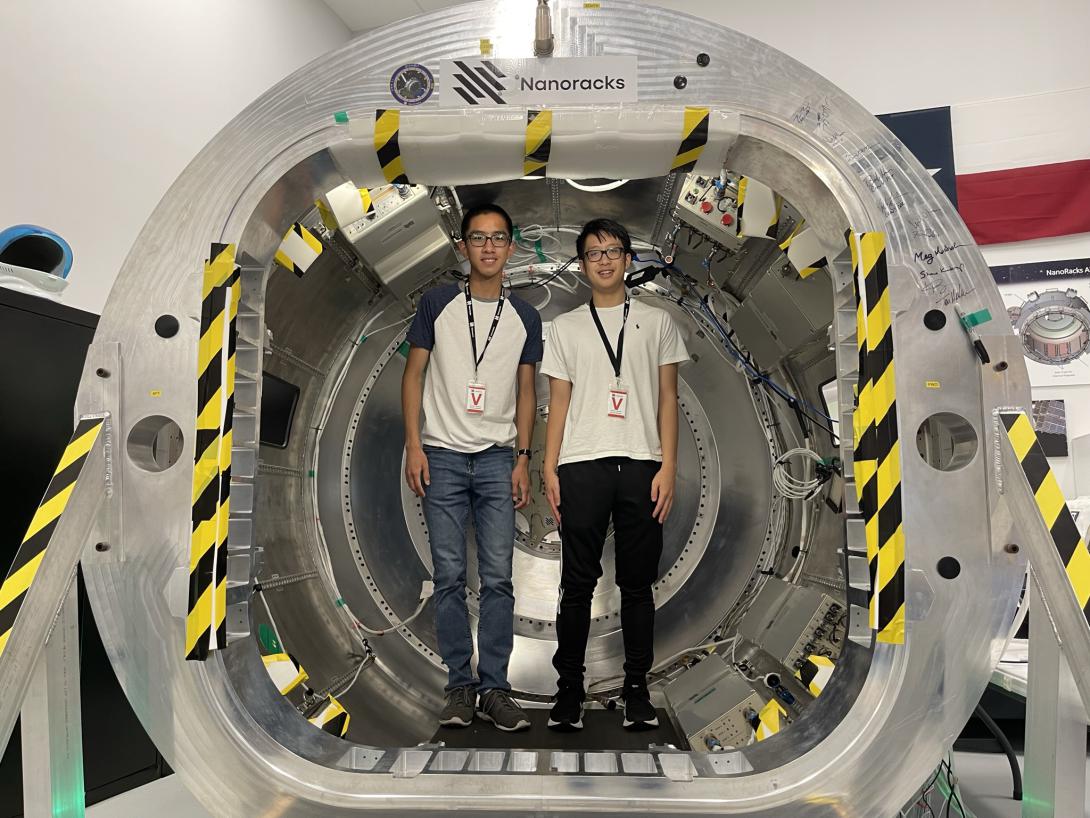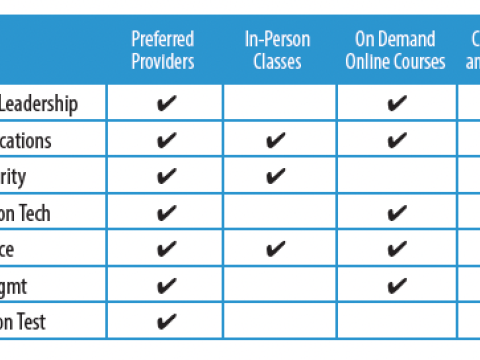Nanosatellites Make Space Accessible in Schools
A team of dedicated researchers and engineers overcame a host of challenges to launch a satellite into space last month after years of work—a project nearly derailed by COVID. What lies ahead for the group that designed, built and coded the 2U CubeSat from scratch? High school graduation.
Students at the Thomas Jefferson High School for Science and Technology (TJHSST) in Alexandria, Virginia, watched on November 26 as NASA launched their satellite into space on SpX-26, a commercial resupply service mission to the International Space Station. The launch marks the culmination of a years-long project for the school’s TJ Space club.
The team used a 2U CubeSat for the mission, which is a type of nanosatellite, measuring approximately 8 inches long and 4 inches wide. These miniaturized satellites have grown in popularity in recent years, with an increasing number of high school CubeSat programs popping up across the nation.
Groups can purchase CubeSat kits, which provide standardized hardware components at a much lower cost than traditional multimillion-dollar satellite missions. However, the TJ Space team chose to build their satellite from scratch without the help of a kit or a partnership with a university or company. They selected space-grade parts, wired the electronics, wrote the drivers and coded the flight software.
The TJ Space satellite, named the Thomas Jefferson Research and Educational Vehicle for the Evaluation of Radio Broadcasts (TJREVERB), aims to test a novel radio-flight computer configuration in low-Earth orbit using Raspberry Pi. It will also evaluate the performance of an Iridium radio on a passively stabilized CubeSat.
TJREVERB is actually the second satellite built by students at the school. TJHSST made history in 2013 as the first-ever high school to launch a CubeSat into space, which they developed in partnership with Orbital Sciences Corporation.
The school utilized NASA’s CubeSat Launch Initiative (CSLI) to get their completed satellite into space. The CSLI gives universities, high schools and nonprofits in the United States the opportunity to fly their miniaturized satellites on upcoming planned rocket launches.
But the students faced many roadblocks in the more than seven years leading up to the launch, including delays from COVID. They were working with a NASA grant, which was extended for just one year during the pandemic, leaving them 12 months to complete the satellite when they returned to school in person.
The students who started the TJREVERB project back in 2016 had graduated by the time work resumed in 2020 after the 1.5-year hiatus. A lack of documentation on the original work left new team members scrambling to understand what had been done and what remained. Facing poorly documented code and outdated machine components, they chose to redo much of the previous work. They reverse-engineered the FlatSat layout, re-milled the hardware, rewrote the flight software and re-examined the mission goals.
Through thousands of hours of collective work, the team overcame all obstacles to meet NASA’s deadline for mission readiness. TJREVERB was go for launch.
Moving forward, the students are making documentation and readability priorities. Their goal now is to ensure knowledge is continually passed down so that new members entering high school can carry the torch as senior members graduate.
The team relies heavily on mentors and outside support for their TJ Space projects. They’re continually seeking organizations and individuals who can assist the students who come into the club with little to no experience in electronics, programming, computer-aided design and robotics.
Kristen Kucko, director of the automation and robotics lab at TJHSST, serves as the faculty sponsor of TJ Space. Kucko previously worked at Apple before taking time to stay home with her children. She wanted to return to the workforce in a job that made a real impact, and it led her to the school. She gives her own time after school hours to support the club and lead the CubeSat effort.
Her impact on the team is clear. On a Thursday afternoon in November, more than 50 students were packed into the robotics lab, buzzing with energy and excitement as they worked on new projects. And while their academic achievements are tremendous, it’s their positive attitude and motivation to learn that are contagious.


Khoi Dinh, a student at TJHSST and project manager at the TJ Space program, has always had a passion for space. “I would be in second grade and check out the NASA books at the book fair.” He pursued that passion and pushed himself out of his comfort zone for the satellite project. “It’s been a really fun adventure so far.”
Being part of the CubeSat project requires huge sacrifice from the students who already juggle daunting school schedules, long commutes, piles of homework and nonstop extracurriculars. But for many, the challenge of the project was also the appeal.
“I wanted to do something high commitment that would be a rewarding experience. I chose TJ Space because it was a really intense project that required a lot of dedication,” explained Zichang Wang, a junior in the TJ Space program.
For other students, it represented a chance to use their minds in a totally different way. “I kind of thought of it as like an escape from schoolwork,” explained Alan Hsu, a student at TJHSST and program manager for TJ Space.
But for the entire team, it was the group dynamic that pushed them through to the finish line. “We built a really strong team culture where every single person working on the project is part of each other’s family,” said Wang. “The robotics lab is my second home. I spend so much time there, willingly. I love every single person on the team, and I think we motivate each other to finish a project. Oh … and there’s pizza."





Comments